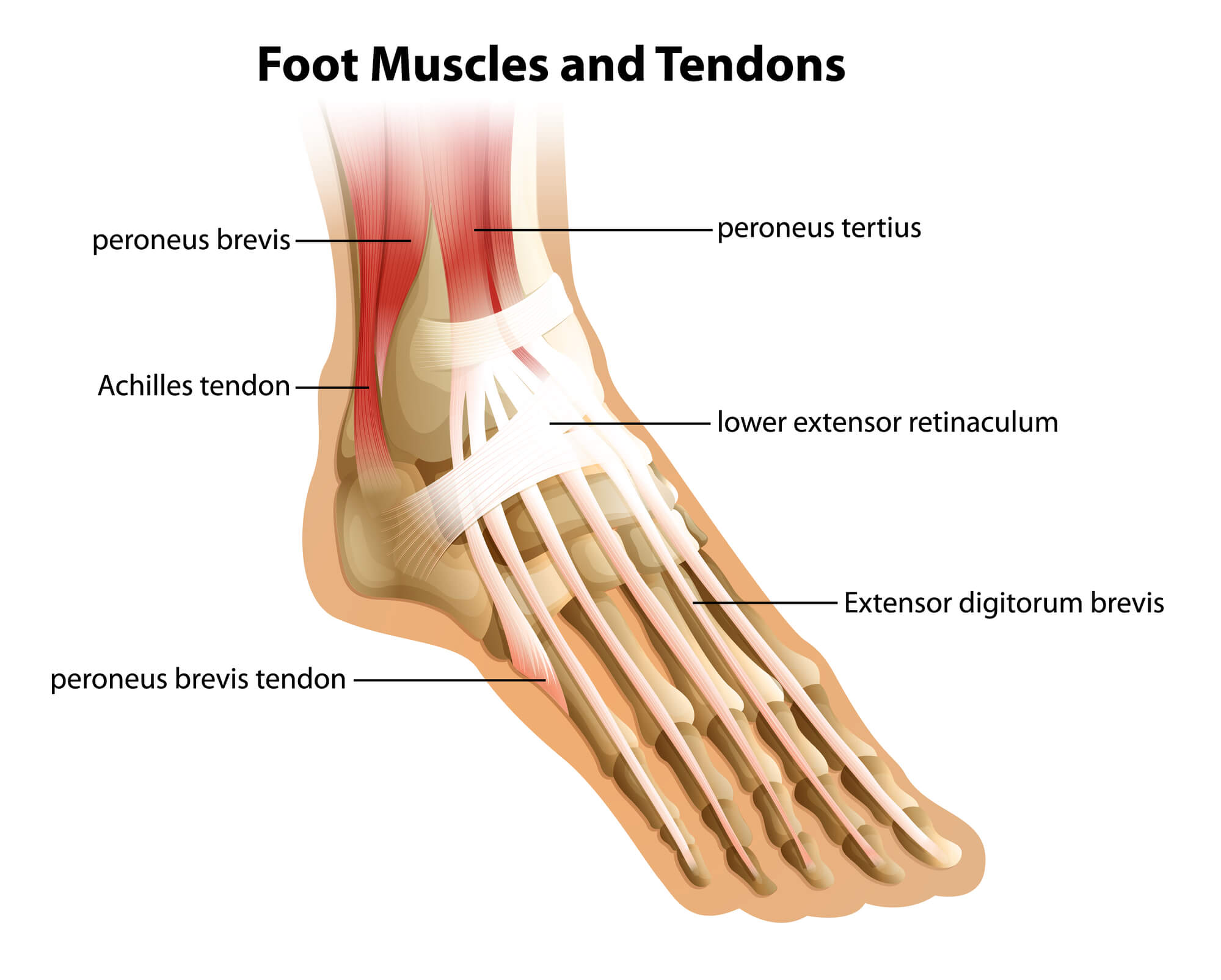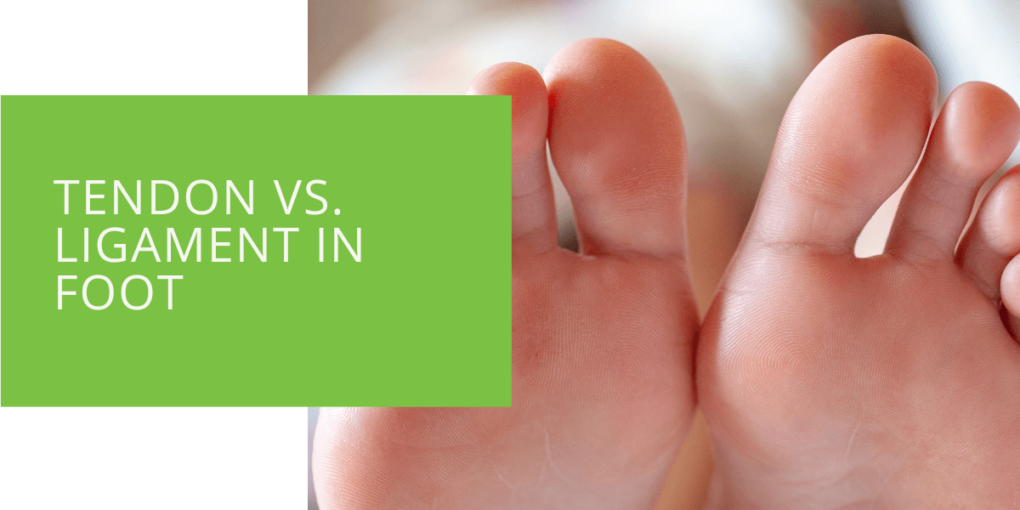Understanding the Difference Between Tendons and Ligaments in Foot and Ankle Health
The intricate anatomy of the foot and ankle relies heavily on the proper function of tendons and ligaments. These fibrous connective tissues are vital in movement, stability, and overall foot health. Delving into their nuances is crucial for comprehending how injuries occur and how to treat them effectively.
Key Takeaways
- Tendons and ligaments are crucial components of foot and ankle anatomy, with tendons connecting muscles to bones and ligaments stabilizing joints.
- Tendon injuries involve damage to the tendon itself, while ligament injuries affect the fibrous bands that connect bones, and accurate diagnosis is essential for effective treatment.
- Treatment options for tendon and ligament injuries range from conservative measures like rest and physical therapy to surgical intervention for severe cases, emphasizing the importance of early intervention and personalized care.
What Are Tendons and Ligaments?
Tendons and ligaments, though similar in composition, serve distinct functions within the body.
Tendons
Tendons are dense, cord-like structures that connect muscles to bones. They act as sturdy anchors, transmitting the force generated by muscle contractions to move bones and joints. In the foot and ankle, tendons enable essential movements like flexing, pointing, and rotating the foot.
Ligaments
Ligaments, in contrast, are fibrous bands that connect bones, providing stability to joints and limiting excessive movement. They are responsible for maintaining the structural integrity of the foot and ankle, preventing dislocations, and ensuring proper alignment during weight-bearing activities.
Ligaments are like bridge-support beams, holding bones together and stabilizing the entire structure. Without ligaments, the foot and ankle would be prone to instability and frequent injuries.
Tendon Injuries in the Foot and Ankle
Tendon injuries, often called strains or sprains, can occur due to overuse, trauma, or sudden movements that exceed the tendon's capacity.
Understanding Tendon Strains and Sprains
A tendon strain involves the stretching or tearing the tendon itself, resulting in pain, swelling, and limited mobility. Meanwhile, a tendon sprain refers to damage to the ligaments surrounding the tendon, leading to instability and weakness in the affected area.
Tendon strains are akin to stretching a rubber band beyond its limits, causing it to fray or tear. On the other hand, tendon sprains damage the rubber band's anchor points, compromising its stability and function.
Treatment Options for Tendon Injuries
Treating tendon injuries often begins with conservative measures to reduce pain and inflammation while promoting healing.
Rest, Ice, Compression, Elevation (RICE)
Resting the affected foot, applying ice packs, using compression bandages, and elevating the foot above the heart level can help alleviate pain and swelling in the acute phase of injury.
Physical Therapy
Physical therapy is crucial in rehabilitating tendon injuries by strengthening the muscles surrounding the affected tendon, improving flexibility, and restoring normal movement patterns.
Orthotic Devices
Orthotic devices, such as braces or splints, may be prescribed to support and stabilize the injured tendon during healing.
Physical therapy exercises are tailored to address specific deficits in strength, flexibility, and proprioception, helping patients regain functional abilities and prevent future injuries.

Ligament Injuries in the Foot and Ankle
Ligament injuries in the foot and ankle are common, particularly during activities that involve sudden changes in direction or high-impact movements.
Common Ligament Injuries
Among the most frequently injured ligaments in the foot and ankle are the anterior talofibular ligament (ATFL) and the calcaneofibular ligament (CFL), which stabilize the ankle joint.
Symptoms and Diagnosis of Ligament Injuries
Ligament injuries typically manifest as pain, swelling, bruising, and instability in the affected joint. Diagnosis often involves a physical examination, imaging studies such as X-rays or MRI scans, and specialized tests to assess ligament integrity.
Ligament injuries can vary in severity, ranging from mild sprains to complete tears. Accurate diagnosis is essential for determining the appropriate course of treatment and preventing long-term complications.
Tendon and Ligament Injuries: How They Differ
While both tendon and ligament injuries can result in pain and functional impairment, they differ in their location, function, and underlying mechanisms of injury.
Tendon injuries typically occur near the muscle-tendon junction, where the tendon attaches to the bone, whereas ligament injuries occur at the joint capsule or ligament-bone interface.
Treatment Approaches for Tendon and Ligament Injuries
The management of tendon and ligament injuries depends on various factors, including the severity of the injury, the patient's activity level, and overall health status.
Conservative Treatments
Conservative treatment options for tendon and ligament injuries may include:
- Immobilization: A brace, splint, or cast restricts movement and allows the injured tissue to heal.
- Nonsteroidal Anti-inflammatory Drugs (NSAIDs): Medications like ibuprofen or naproxen may be prescribed to reduce pain and inflammation.
- Physical Therapy: Engaging in therapeutic exercises to strengthen muscles, improve range of motion, and enhance joint stability.
Surgical Interventions
In severe tendon or ligament injuries, surgical intervention may be necessary to repair the damaged tissue and restore optimal function.
Conclusion
Understanding the intricacies of tendons and ligaments is essential for maintaining foot and ankle health. Whether you're dealing with a tendon strain, ligament sprain, or any other foot or ankle issue, ePodiatrists are here to provide expert care and personalized treatment plans. Our experienced team can guide you through every step of your recovery journey, from diagnosis to rehabilitation. Don't let tendon or ligament injuries hold you back – schedule an appointment with us today!
Early intervention is key to preventing further damage and achieving optimal recovery. Take the first step towards healthier feet and ankles by contacting ePodiatrists today.

